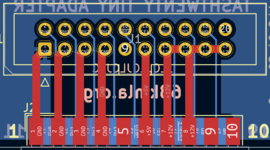Tashtari
PIC Whisperer
It is tempting to do that, maybe find out a bit more about those mystery commands that Mac sends when you format the disk, but the one I bought is explicitly in for-parts condition, so I don't have much faith that I'll be able to get it to do anything except look good.now that you have a real HD20, perhaps connect it to the CII and put the analyser on it to see how the 'real deal' behaves?...
If anyone is interested in tinkering with this and helping to uncover the mysteries of the DCD protocol, I did make a version of the TashTwenty firmware that acts as a DCD protocol analyzer. You'd need a lot of things, though, most notably a PIC programmer and a working HD20 that you're willing to erase. I'm happy to support this work if anyone fits those criteria...



